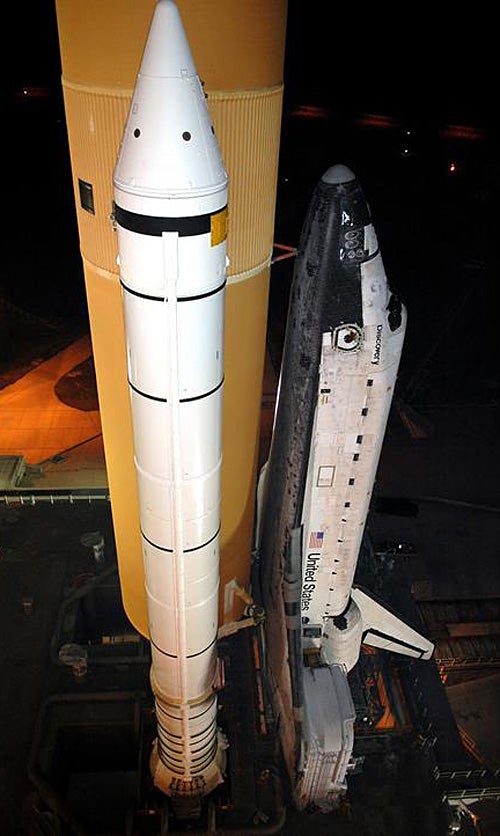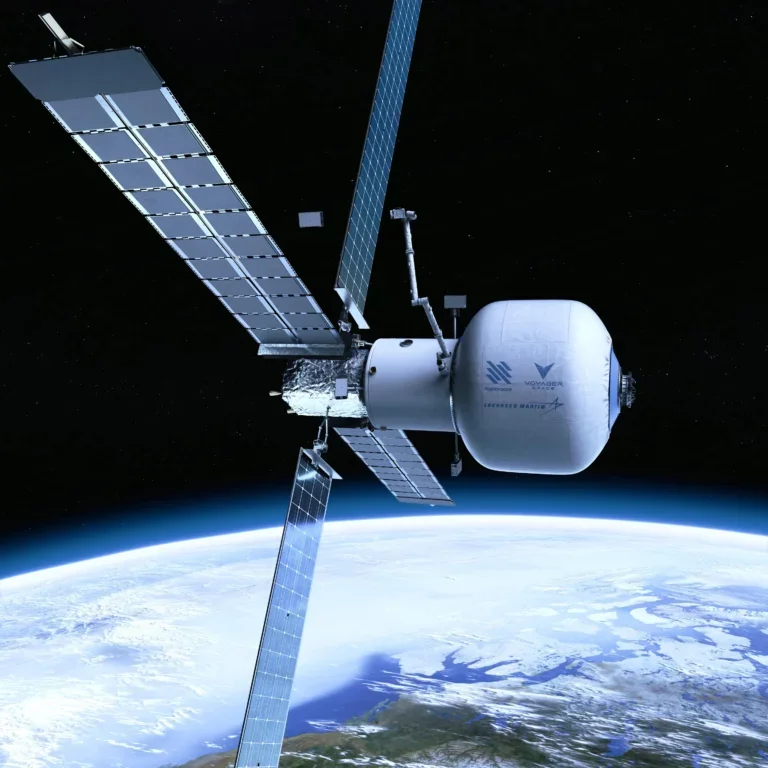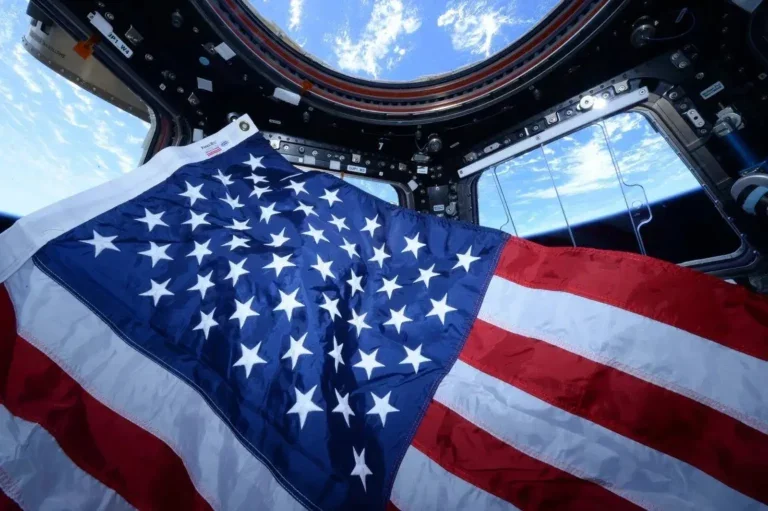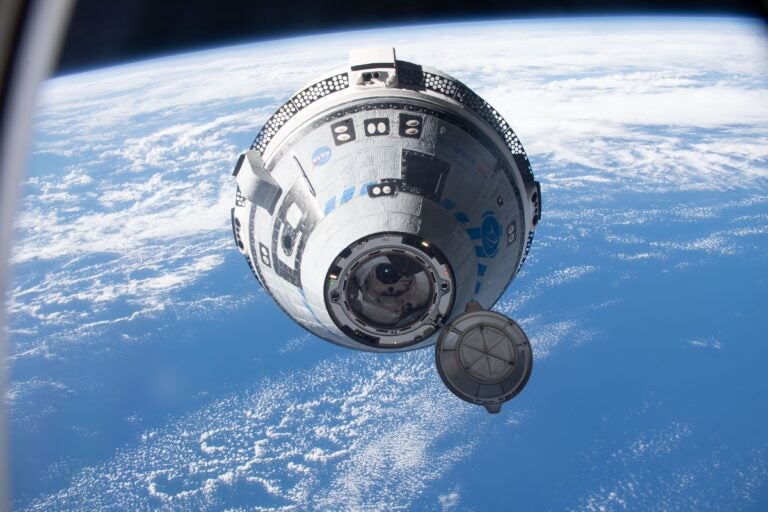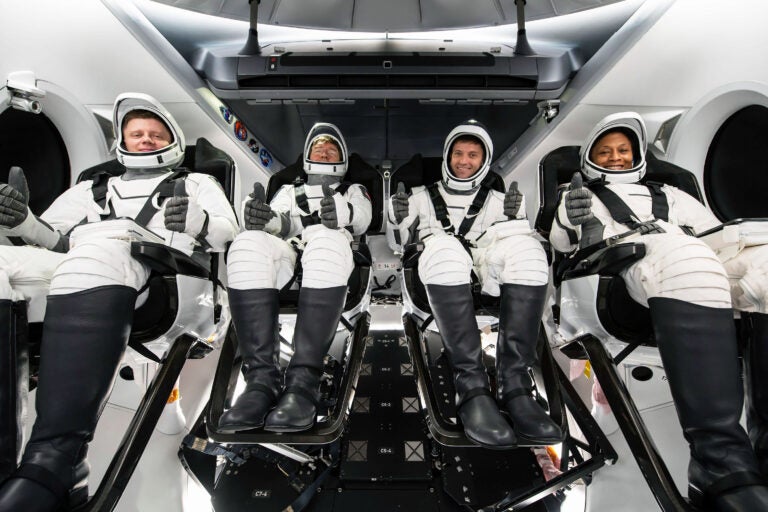The space shuttle Discovery (STS-114) will launch no earlier than July 13, according to NASA administrator Michael Griffin. He made the announcement at a news briefing Friday, April 29. The new launch window for Discovery runs from July 13 to 31, with launches beginning in the late afternoon.
The decision about Discovery’s launch came when managers conferred about unresolved issues regarding debris. “We’re doing this after a series of reviews over the past week and a half,” said Griffin. These reviews made it clear that more time was needed before launch. He added that the decision to slip the launch was the result “of no one thing, but the sum of all those things.”
A 1.5-pound piece of insulating foam came off the external tank and struck the left wing of the shuttle Columbia as it climbed into space in January 2003. The debris punched a hole that destroyed the orbiter and killed the entire crew on re-entry. Post-accident, much of NASA’s efforts have centered on identifying and removing sources of foam debris.
“We’ve taken more than 175 debris sources off our worry list,” said Wayne Hall, deputy shuttle program manager.
But, he noted, ice has emerged as a concern after studies showed there is a period during the shuttle’s ascent when ice chunks can fly off part of the external tank. These might hit the orbiter, damaging the thermal protection tiles and the reinforced carbon-carbon heatshield. NASA’s planned solution is to add electrical heaters to the outside of the pipe that feeds liquid oxygen from the external tank into the shuttle. This would prevent ice from forming in the critical area.
In addition to adding heaters to the feed pipe, Hall said that NASA will do more computer simulations regarding the foam. In particular, he said, engineers are studying how debris might come from the top and forward part of the tank.
The choice of dates and lift-off times for a launch window are driven by the need to have daylight when the shuttle jettisons its external tank just before reaching orbit. Mission controllers want to observe and photograph the separation and check the tank’s condition. Launch times within each window are controlled by the orbit of the International Space Station, which will be used as a temporary safe haven if Discovery is damaged too much to come back to Earth.

